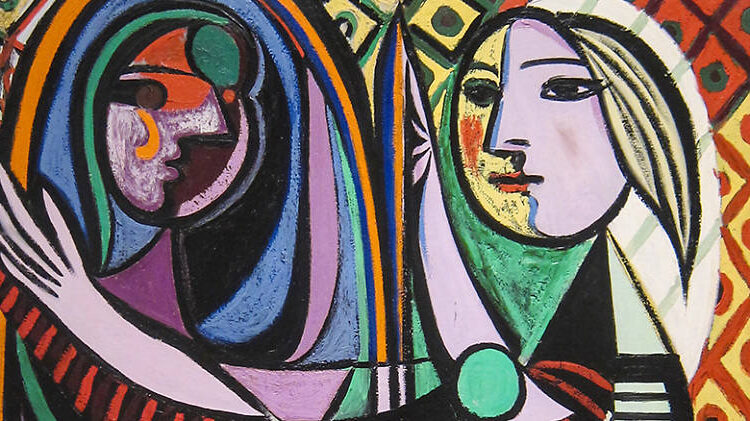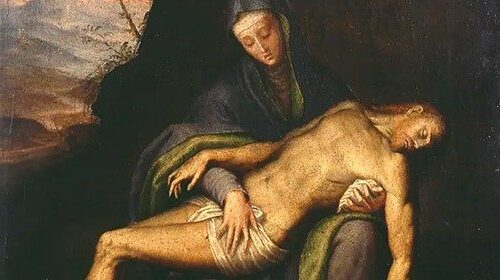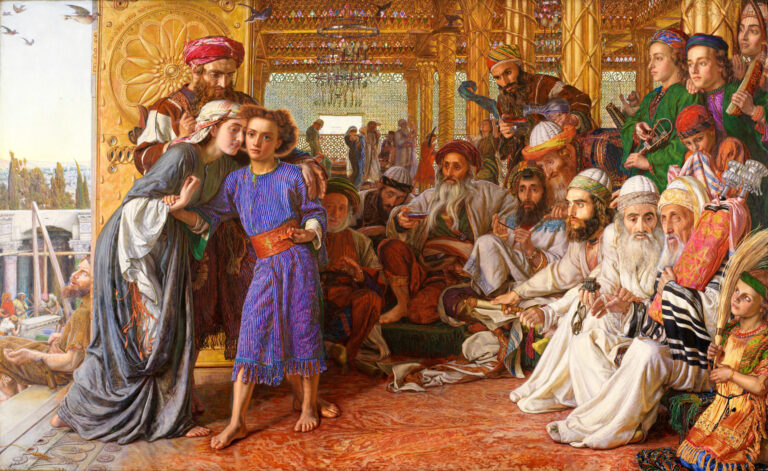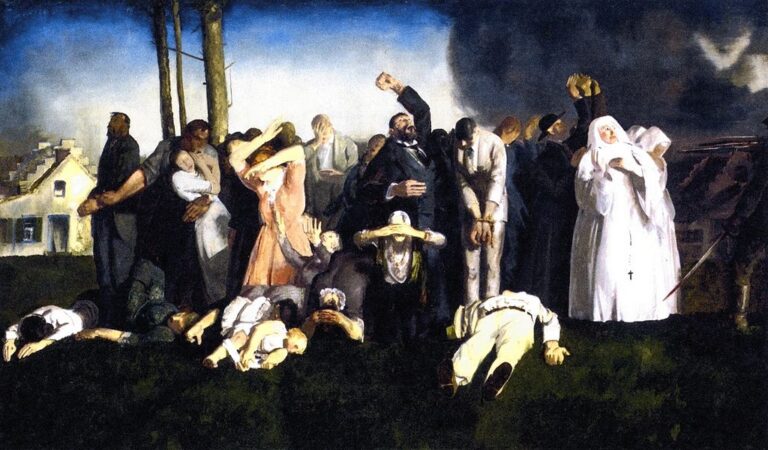The Master of Mood: 7 Key Insights into Jules Dupré’s Artistic Journey
Born: April 5 1811, Nantes France
Death: October 6 1889, L’Isle-Adam France
Art Movement: Realism, Landscape
Nationality: French
Influenced by: John Constable, J.M.W Turner, Jean-Baptiste-Camille Corot and Théodore Rousseau
Teachers: Louis Cabat and Auguste Raffet
Jules Dupré: The Visionary Behind the Barbizon School’s Landscape Revolution.
Life and Career of Jules Dupré
Jules Dupré was a renowned French painter whose landscapes played a pivotal role in the Barbizon school. His work, often infused with dramatic and tragic sensibilities, significantly contributed to landscape painting in the 19th century.

Early Life and Background
J. Dupré was born in Nantes, France on April 5, 1811. The son of a porcelain manufacturer, he initially worked at his father’s factory before honing his artistic skills at his uncle’s china factory in Sèvres. This early exposure to art through the medium of porcelain laid the foundation for his artistic career.
Career Development and Milestones
Several significant milestones marked Jules Dupré’s career progression:
- 1830s:
- His first encounter with the English landscape, notably the works of John Constable and Joseph Mallord William Turner, was during a trip to England.
- Collaboration with Théodore Rousseau, with whom he travelled to the Landes region and the Pyrenees in 1844.
- Awards and Recognition:
- Dupré earned accolades for his contributions to French art, notably being awarded the French Légion d’Honneur.


Throughout his career, Dupré was influential in developing landscape painting styles that captured nature’s emotional and dramatic aspects. His works, characterized by their vivid emotional resonance and his distinctive painterly style, were celebrated in Paris and beyond. Dupré passed away on October 6, 1889, in L’Isle-Adam, leaving behind a legacy as one of the prominent figures in French landscape painters.
Artistic Style and Influence
Jules was a pivotal figure in the Barbizon School, and his work reflects a profound interaction with nature, emphasizing the dramatic and emotive aspects of the landscape.
Dupré’s Artistic Style
Known for his vivid depiction of the landscape, Dupré established himself as a master of atmosphere. His bold colour and dynamic brushwork capture the mutable qualities of light and sky. He was particularly adept at rendering sunset effects and nature’s fleeting moods, ranging from the serenity of a calm day to the charged tension before a storm. The foliage in his paintings often mirrors nature’s complexity, contributing to his work’s overall emotional tone.



His canvases are marked by a heightened sense of the tragic and dramatic, drawing viewers into scenes suffused with powerful movement in nature. Dupré’s depiction of landscape transcends simple representation to express the poetry of nature, with each scene imbued with a distinct sense of mood.
Influences and Contemporaries

Dupré’s style was influenced by his exposure to the work of English painter John Constable, whose focus on naturalistic landscapes and skilful treatment of light and colour significantly impacted him. Théodore Rousseau and Jean-Baptiste-Camille Corot, his contemporaries in the Barbizon School, were also influential in shaping his approach to landscape painting. Rousseau’s epic portrayal of nature contrasted with Corot’s lyrical simplicity, and Dupré found his niche by exploring the landscape’s more emotionally charged aspects.
Exhibitions at the Salon placed Dupré in the public eye alongside other landscape painters of the time, where he showcased his ability to infuse traditional landscapes with expressive storm clouds and evocative light. His work is a testament to the Barbizon School’s movement away from previous generations’ formal classicism, emphasising a direct and heartfelt connection with the natural world.

Notable Works and Exhibitions
Jules Dupré was a central figure of the Barbizon, renowned for his vivid landscapes. His work captures the transient effects of light and atmosphere, evident in his major artworks, and was celebrated through various exhibitions and accolades during his career.

Major Artworks
- Morning and Evening at the Louvre: These paintings represent Dupré’s adeptness at capturing the nuances of natural light.
- Crossing the Bridge: Showcased in the Wallace Collection, this early work is indicative of Dupré’s skill in depicting rural life.
- The Windmill (the 1850s): Reflects the influence of John Constable, with its dynamic brushwork and study of light.
- On the Road (1856): This painting illustrates a tranquil rural scene, with delicate attention to the interplay of shadows and sunlight.
- Landscape with Cattle at Limousin: Characteristic of Dupré’s oeuvre, showcasing his ability to animate the pastoral with dramatic skies and vibrant greens.
- Stormy Sky, Two Boats in a Storm, and Barks Fleeing Before the Storm: A series of works that emphasize Dupré’s fascination with, and mastery of, tumultuous maritime scenes.
- The Cottage by the Roadside: An exemplar of his landscapes where human habitation melds subtly with the environment.

Exhibitions and Recognition
- Second-Class Medal: Dupré was awarded this honour in 1833, solidifying his reputation in France’s art circles.
- Officer of the French Légion d’Honneur (1975): Although the date appears anachronistic, if this refers to posthumous recognition, it speaks to the enduring admiration for Dupré’s contribution to art.
- Barbizon School Exhibits: Dupré’s works were regularly exhibited alongside those of Théodore Rousseau and others from the Barbizon, notably featuring landscapes inspired by the Forest of Fontainebleau.
- International Exhibitions: His paintings were shown in cities such as Southampton and Plymouth, reflecting the international appeal of his style.
- Porcelain Beginnings: Before oil on canvas became his medium of choice, Dupré started with painting on porcelain, indicating the breadth of his artistic capacities.
Throughout his career, J. Dupré depicted the rural French countryside, notably regions like Limousin and the Forest of Fontainebleau, with a mastery that influenced and was informed by his contemporaries in the Barbizon school and beyond. His exhibitions spanned local and international venues, attesting to his wide recognition as a seminal figure in landscape painting.

Frequently Asked Questions
This section addresses common inquiries about J. Dupré, a pivotal figure of the Barbizon School, and his contributions to 19th-century landscape painting.
Who was a notable representative of the Barbizon School in French painting?
Jules Dupré was one of the leading members of the Barbizon School, a French art movement that focused on naturalistic painting and influenced the development of Impressionism.
What are the defining characteristics of Jules Dupré’s landscape paintings?
Dupré’s works are known for their dramatic and emotive qualities, often portraying the untamed aspects of nature. His landscapes typically feature moody skies and robust rural scenes.
During what time period did Jules Dupré actively contribute to the art world?
J. Dupré was an active contributor to the art world from the 1830s until his death in 1889. His career was most prolific during the mid-19th century.
How did Jules Dupré influence the development of landscape painting in the 19th century?
He was instrumental in advancing landscape painting by introducing a sense of drama and moodiness to his depictions of nature, moving away from the idyllic and serene portrayals common in earlier periods.
Are there any famous masterpieces created by Jules Dupré, and where can they be viewed?
Dupré’s masterpieces are displayed in various prominent art institutions, including the National Gallery in London, where his stirring landscapes continue to be appreciated by the public.
What was Jules Dupré’s artistic philosophy and how did it reflect on his work with the Barbizon School?
Dupré’s artistic philosophy entailed a profound connection with nature, emphasizing its emotional impact and the sublime over mere visual accuracy. His approach mirrored the Barbizon ethos of portraying the authentic beauty of the countryside.







